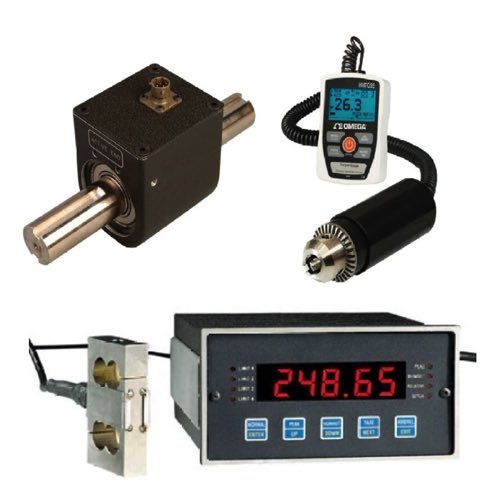Force & Strain Measurement

Force and strain measurement products are essential tools used across industries to accurately monitor loads, stresses, and material performance. Load cells, strain gauges, and force sensors are designed to convert mechanical force or strain into readable electrical signals, allowing engineers to analyze structural integrity, performance, and safety. These devices come in a variety of formats and sensitivities, offering solutions for measuring everything from delicate material deformations to heavy industrial loads under harsh operating conditions.
Modern force and strain measurement systems incorporate advanced materials and technologies to ensure high accuracy, repeatability, and durability. Strain gauges, for example, typically feature flexible backing materials bonded to a surface, where any changes in surface strain cause a corresponding change in electrical resistance. Load cells can be designed for compression, tension, or multi-axis measurement, and many are constructed with robust stainless steel or specialized alloys to withstand extreme environments, high pressure, or corrosive conditions.
Analog and Digital Control Signals: The Basics
Digital Signals
Digital signals are represented in either a true or false. There is no gray area with digital signals. An example of this might be a light switch. A light switch is either on or off. Another example of this might be a motor that is running or not running. Digital signals can be generated with both AC and DC circuits with varying voltages, currents and resistance. Some practical examples of using digital signals in an industrial environment might be if a pump is running or not running or a whether a valve is open or closed.
Analog Signals
Analog signals convey information in the form of a range. A light switch might be on or off as a digital signal, but a dimmer switch would be an analog signal. It can be on or off, but it can also be somewhere in between. A practical example of using analog signals in an industrial environment would be if there is a need to measure the level of a tank; whether it's full, empty or somewhere in between. Analog signals can take many different forms with some of the more common being a 4 to 20 milliamp signal or a 0 to 5 or 0 to 10 volt signal.
Communication
Communication in a device can either be sent or received. Whether that data is sent or received depends on the type of information. Is there a need to monitor the status of something? If so, an input needs to be received about that information. Is there a need to control something? If so, an output needs to be sent about what needs to occur. Receiving inputs and setting outputs are both things that can be accomplished by using both digital and analog signal types. Therefore, the signals are referred to as analog outputs (AO), analog inputs (AI), digital inputs (DI) or digital outputs (DO).

